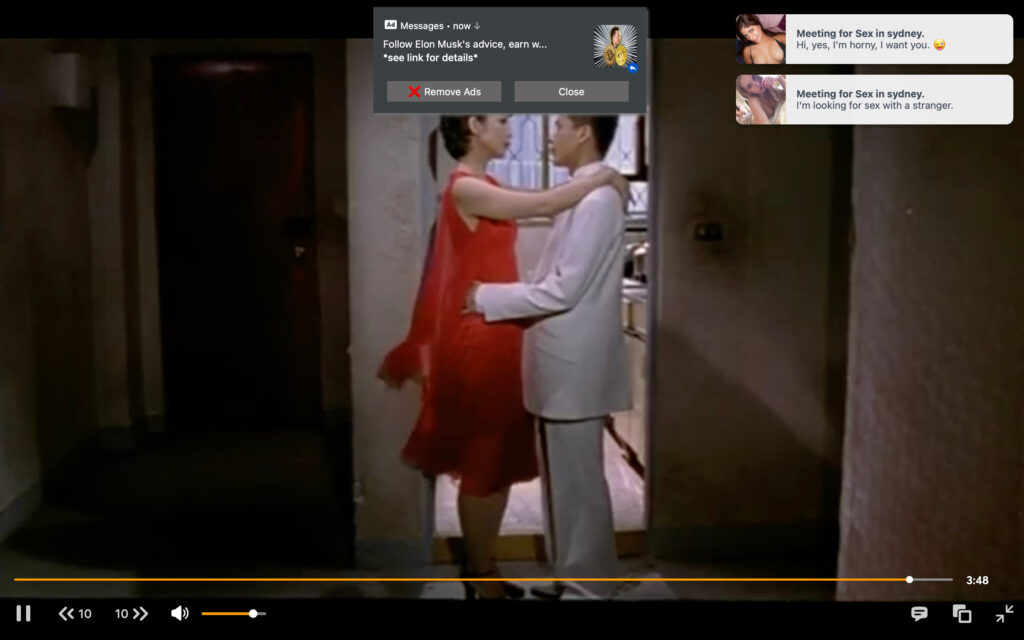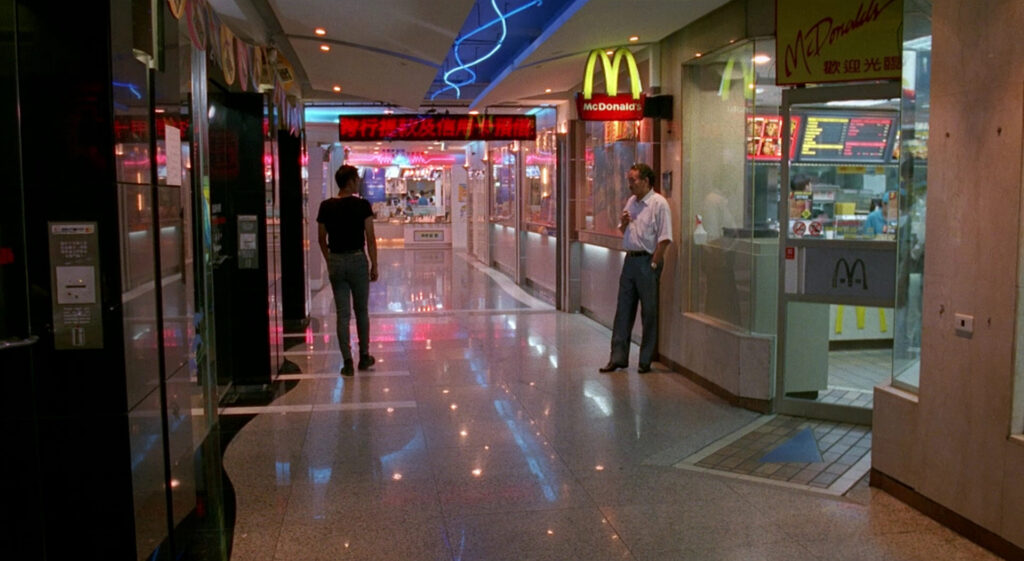It feels too easy to write the abject — I puke all over myself and my organs fall out and I shit my pants and everything that was inside is out now. That’s writing the abject though, not writing about it. It doesn’t necessarily mean anything in the above example, it simply operates and exists. I tried to think about what feels the most abject to me — not conceptually, but rather something that genuinely induces a gut-churning sensation. My housemate recently told me that in our bodies, microorganisms outnumber human cells (‘human’ cells) ten to one. These non-human cells make up 1–3% of our entire body weight.1 This isn’t the intellectualisation of our bodies’ permeable boundaries; it is the actual active truth that what I think is my body is home to three times more non-me than ‘me’. My edges burst open and pour me out into the room.
To short-circuit the directness of ‘the abject’ and prompt deeper writing, I shuffled the content of my scrapbook-blog and was given a short quote by Taiwanese filmmaker Tsai Ming-liang: ‘My scripts are very small. They’re like poetry, only containing instructions on how to make my films. When I write my scripts, there is no dialogue for the actors, but I communicate a lot with them so that when they are in settings, they have an idea of how to communicate their characters.’2 Tsai’s slow cinema doesn’t blatantly contain the abject; he instead creates quiet meditations of longing.
Tsai’s Goodbye, Dragon Inn (2003)3 is set during the final screening of Dragon Inn at a cinema in Taipei. Like most of his work, it’s hard to really say that the film is about that, because even though Goodbye, Dragon Inn revolves around this screening, there’s no traditional narrative development. As with many of his films, there’re about five lines of dialogue across the entire 82-minute runtime. It was here that I began writing, a scene where the only front-of-house staff member with a severe limp washes her hands in a grimy bathroom sink. The doorway in which she stands is on one side of the screen, the right, and on the left is a vast, empty hallway. I don’t know why I came to this particular scene, but skipping through the upload of the entire thing on YouTube it felt right; the sink is dirty but she doesn’t notice, her body makes movement difficult for her but rather than making this an abject battle with the self, Tsai captures her movement in empathetic patience.

The Hole (screenshot), directed by Tsai Ming-liang, 1998, film, 95 mins, Central Motion Picture Corporation on suspect website

The River (still), directed by Tsai Ming-liang, 1997, film, 115 mins, Central Motion Picture Corporation
Illness regularly occurs in Tsai’s work: see, for example, a film like The River (1997),4 which is based on the real-life mysterious back pain and fever experienced by Tsai’s muse Lee Kang-sheng. These cinematic sicknesses are never about the disgusting limits of the body (aka the abject) but instead reflect on characters’ internal worlds. Even while The River is based in fact, Tsai still depicts the sickness as reflective of the person experiencing it: ‘I feel that the cause of sickness nowadays is people not exploring their internal realities … I began to understand the relationship between human psychology and illness … I think it’s true for everyone that we have a hard time confronting and recognizing the dark corners of the mind.’5
Tsai’s latest film Days (2020)6 acts almost like a sequel to The River, structured in part around documentary footage of Lee whose neck ailments, probably the very ones that inspired The River, have returned. Tsai shot footage of Lee going to acupuncture appointments in the city, placidly moving through daily tasks while holding his neck or simply lying face down in pain. His troubled body is juxtaposed with a fresh one, a young man who squats and seems to endlessly watch vegetables, finally cooking them.
Although The River and Days have illness at their centres, Tsai’s most disease-like film is The Hole (1998)7 with its pandemic-premonition, detailing a near-future (now past) where a viral epidemic causes people to crawl around like cockroaches, avoiding the light. As these infectious dangers linger in the background, there are two additional disjunctive elements that interrupt characters’ lives: the leaking, collapsing roof/floor between apartments where our protagonists live, as well as campishly glam musical numbers that literally burst through the otherwise glacially paced narrative. Ironically, the most pressing virus I experienced while watching this film on an illegal streaming site was the deceptive pop-up ad in the corner of the window which claimed ‘⚠️ Mac Infected? Click to protect your Mac!🛡’ and ‘Mac is full of virus? Cleanup it now!!!’
*
I keep losing track of what I mean, and I don’t think I really believe that there’s an inherent connection between Tsai Ming-liang and the abject. I scan over Julia Kristeva’s urtext Powers of Horror (1980) while taking a shit to try get a grip on it, and I’m at once struck by how abject this moment is while also remembering a woman in The Hole who has to hold a bucket over her head while using her toilet because the plumbing from upstairs leaks onto her. She performs an elegant, abject choreography while holding the green tub over her with one hand and using the other to clasp a phone against her ear.
The first subheading of Powers of Horror is ‘NEITHER SUBJECT NOR OBJECT’.8 The excrement and discharge and husks we lose from our bodies aren’t subjects — we wouldn’t consider a detached fingernail as ‘me’ in a way that we do our attached finger — but they also aren’t objects — the fingernail was once part of me, so where is the line? The abject challenges the boundaries of a self.
Absence and desire are undeniably co-dependent. I was trying to find a parallel between them as both point to something missing. The difference is that what is missing in the abject is something lost, it was once attached but now isn’t, while the yearning of longing is an anticipatory space — you aren’t complete without the object of desire. Your organs revolt because the inverse-abject of desire needs the fleshy, human cure. It’s like fuck, I’m not even a person without you, I’m an object dripping to be absorbed inside.
Tsai’s films aren’t classically yearning in terms of romantic genre, but their stillness contains a yearning nonetheless. In The River and Goodbye, Dragon Inn anonymous sex is pursued by characters who feel something missing in their lives and seek, through others, to be — emotionally, metaphorically and physically — ‘filled up’. Conceptualised thus, desire isn’t a focused beam of love for a specific subject, but a dispersed challenge to the subject that something is missing. Sex is abject, and Tsai neither really challenges nor confirms this.
It has to be a queer mode of sex, and it’s probably too simple, but in cruising you get some random guy to stuff you full in a public bathroom that reeks of shit and the bottoms of your shoes get wet from all the piss on the floor. In The River, the father of Lee’s character cruises in a shopping mall. We see the older man standing, staring and waiting for that virile young body in a black t-shirt. It’s looking, and maybe touching, but also maybe not touching because even when you touch, do you ever really touch? Snack Syndicate write in their book Homework that ‘[t]ouch is here understood as an identification, a moment in which one sees their own subjectivity reflected back in another … [T]ouch is not a levelling gesture, even when reciprocated. Touch does not make us undifferentiated with the one we touch, nor does our being touched mean we become the one who touches us.’9 You’re always going to be a third of human cells, trapped in a bunch of others that aren’t. You will never really touch anything else, except the things that are part of us but aren’t.
Days literally and narratively climaxes (about two thirds of the way in) when Lee receives an intensely soothing massage from a young man in what is eventually revealed as a paid session with a sex worker, who eventually masturbates Lee. Maybe as Tsai gets older, he softens. It’s not the final arrival of desire but a brief satiation, the sweet knowledge that this will have to do, and in the end it does.
For all the body aches, fucking, leaking water, cartography of Lee Kang-sheng’s face, Tsai feels that he’s never been able to handle the human body. While speaking with MUBI Notebook, he said:
What I cannot really deal with is not soul — because soul is something I can deal with — but the body, which is actually something I cannot deal with. We cannot avoid getting sick and getting old and feeling pain. We used to possess beauty, now we cannot avoid decay. We cannot control our body, and we all need to be calmed. A lot of times we need another body to calm our bodies down.10
I watch films to try calm my nervous body. When I watch Tsai’s movies, I see bodies. If the utopian is, as the oft-quoted Cuban-American academic José Esteban Muñoz states, on the horizon11 — both incoming and imperceptible — then the present orientation towards utopia creates an abject absence. We hope for the potentiality of something, a ‘not-yet-here’, but in the moment it is still lacking. It’s a phantom limb that moves backwards through time, and we are haunted by anticipation. It’s desire for something. Desire is, inherently, utopian, right? Water is always present in Tsai’s films, and when I think of this horizon I always see a sun shimmering over a body of water. In all the leaks and downpour and floods of these movies, a sun could be reflecting in some unseen sky.
The final scene of The Hole is a calm musical number, with Lee and the woman in the apartment downstairs — the one on the toilet with the bucket over her head — slow-dancing. A Grace Chang song plays, the translation from Mandarin reading: ‘I don’t care who you are / but in your arms I cling / alone together in the dark.’ She’s wearing red, the colour of blood; he’s wearing white, the colour of cum or milk — gross fluids that give life. The brightness and romantic 1940s music are disjunctive, but I don’t care. It’s abjection and desire slow-dancing. It’s me and Lee Kang-sheng. It’s Lee Kang-sheng and a young sex-worker/masseuse. It’s me alone facing the TV that plays these films. It’s a young man cruising in the cinema of Goodbye, Dragon Inn who meets Lee Kang-sheng but is turned down and instead told about ghosts. The woman from the cinema limps home at night through the rain, alone.
of Horror: An Essay on Abjection, trans. Leon S. Roudiez (Columbia University Press, 1982), p. 1.
